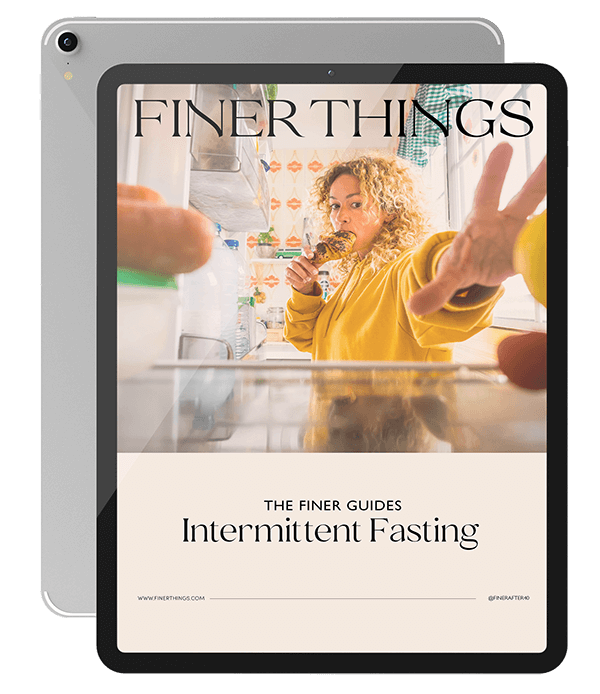The Best is Yet to Come: Reinventing Your Career After 50

By Franki Hanke
Don’t be scared to make a change for the better.
As children, we’re asked what we want to do when we grow up. Then, after high school, we head to college and pick a major that will continue our funnel into this job.
Then, from graduation onwards, the simplified story has every adult continuing on the same path until a glorious retirement. Real-life isn’t so simple. Instead, maybe you’re thinking about reinventing your career after 50. For many older women, that’s exactly where they’re at.
A career change, whether it’s a pivot to a new position or a totally new career, can change how you feel about life every single day. There’s no such thing as too late when it can bring you more joy, satisfaction, or passion.
Reinventing Your Career After 50
Whatever your motivation, you’re justified in seeking a new path. The process of how isn’t simple and requires both introspection and strategy, but there will never be a perfect time. The best time to improve your life is now.
Consider What You Want
Before you can make changes towards your life’s second half, you have to consider what you want. Instead of a bucket list of the things you want to do once, think of the things you want to do every day, every week, or every year.
→ What about your current role do you want to change?
→ What about your current role do you like (and want to keep)?
→ What new skills do you want to learn?
→ What areas of your life need the most drastic change?
→ What are your priorities overall?
As you consider your reinvention, this is the moment to consider everything about your life. As you identify the things you want to change it informs what may be your new wishlist for a role.
For example, if you feel like you’re always at work and never spending time with your friends, maybe you seek a part-time role or flexible schedule rather than full-time work.
Consider whether you want to try something new or re-prioritize and problem solve within the same type of role.

Frame What You Want as a Career
Once you have your self-reflection complete, you want to frame those observations into the context of a career. Know what you want from a new job before you start looking or you may jump into something where you want to change your life again in a year.
Be realistic about what is possible in a career, and refer to your priorities relentlessly.
If your family is your number one priority, then a demanding, full-time position at your dream job might still be out of line with what will make your life the fullest.
Ask yourself:
→ How much do I want to work each day? Each week?
→ How much flexibility do I require to fit my other priorities?
→ What environment do I want to work within?
→ What skills do I have and want to use?
→ What new areas do I want to explore (industry or skill-wise)?
→ What work experiences are most fulfilling or enjoyable?
For many, their second career is with their own business. Americans aged 55 to 64 are now the fastest-growing group of new entrepreneurs. Most of those are people pursuing their passion (42%). Entrepreneurship often offers more flexibility to mold a new career around a new life balance in a way an employee role often cannot.
If you’re not launching your own new business, then you’ll need to clearly define what you’re seeking in a new job so you can stick to these requirements as you search.
Be realistic, but not pessimistic
If you’re looking for a drastic change into a role that requires specific education or certifications, be realistic about if you have enough time. Advanced degrees may not be a worthwhile investment depending on when you plan to retire.
However, you don’t have to return to school for a multi-year degree to learn new skills. Consider online courses or self-teaching to add new skills to your roster. This can be cheaper and quicker than other learning methods.
Get The Finer Life
Our Sunday email has tips and content you will love – exclusively for our subscribers.
"*" indicates required fields
For many older workers, new requirements related to social media and technology often represent a roadblock. Push out of your comfort zone to master new things, and you’ll be able to combine your experience with modern tools.
Skillshare and Coursera offer tutorials and classes on a range of topics that you can use for self-teaching.
Don’t be limited by industry lines.
Oftentimes, we are stuck in our industry. We think the easiest transitions exist within the same genre of work, but instead focus on what your core skills and passion are. Don’t be limited by your current industry.
For example, a participant in an academic program with Paths to Creative Retirement was originally a child sign language instructor. They worked in education! However, in reflecting on their core passion, they recognized that what they really cared about was the listening and translating of a child’s ideas and interests. They ended up transiting to a guardian in children’s court doing the same thing, but in a totally different industry and context.
Address your limitations.
Depending on your current financial status, you may have more or fewer options. If you have more money to work with, you can invest in a new business, pay for new educational opportunities, or invest time building up a new direction.
If money is a concern, pair your professional planning with budgeting so you know exactly what you can afford to do and risk.
Create a Narrative
The more drastic the change you’re making, the more essential it will be to properly pitch yourself for new roles, opportunities, and positions.
Rather than having a stagnant list of past experiences and existing skills, create a narrative that briefly encapsulates your journey, growth, and core mission.
Understand your Timeline
Create connections between each stage of your career or life so far. Rather than using merely your employment history, utilize all aspects of your life if they leverage into what your goal is.
If your midlife wasn’t spent in a work position but as a stay-at-home mom, what did you do then? Volunteering, passion projects, and personal skills can all be leveraged into professional proof if they fit your narrative.
Transfer Skills Forward
Rather than framing a career or lifestyle change as “I used to do that, now I do this,” consider what bridged a connection between this change.
→ In a professional context, think about how your skills transferred over and how skills from your previous role will add value to this role.
→ If a personal context, think about how your past experience led you to this point. What from your past was required to lead you here?
You want to pull all aspects of yourself to the present. Don’t leave anything else behind as “outdated” if it can serve you.

Support your Story with Resources
Utilize additional resources to support or provide proof of your overall story.
→ Resume or LinkedIn profile (to show professional and volunteer experiences)
→ Portfolio or Work Samples (to show your style and quality of work)
→ Reviews or Feedback (to highlight soft skills or support your claims)
If you’d like one-on-one support for doing this, which is particularly worthwhile if you’re making a drastic change within a competitive or corporate landscape, consider engaging a career coach.
Career coaches can provide expert support on planning this transition (which may require more than simply putting in your two-week notice and jumping ship), updating your resume and LinkedIn profile, negotiating and interviewing for your new role.
Identify Skill Gaps
If you do notice a gap in your skills that is blocking you from a specific role, find a way to learn what you need and find a way to practice the skill needed for professional reinvention.
If you’re at an existing job, find a way to branch out into this area you’d like to learn about. Enquire about any training options, workshops, or responsibility adjustments that allow you to get time on the job in this area.
If that isn’t possible, consider volunteering to add this skill to your history and add a new chapter to your personal narrative that closely reflects your ideal “ending.” Encore.org is attempting to bridge the gap between generations with collaboration and support for cross-generational projects.
For more traditional volunteering opportunities, that aren’t limited by location, look at Catchafire. They connect nonprofits with virtual volunteers based on skill. If you’re tackling a specific thing for the first time, you can still find opportunities to flex those new muscles.
Don’t Quit Once You Start
Once you’ve started this transition, it might be uncomfortable. There may be more challenges than your previous status quo but don’t back down.
Remember, with every step, what you framed as your priorities. You’re working to create the best life possible for yourself. That is worth the hurdles now.

Want a Free Guide?
You will receive our free 19-page guide and access to our exclusive content, private invitations, and tips you’ll love.
"*" indicates required fields
Facebook Group

